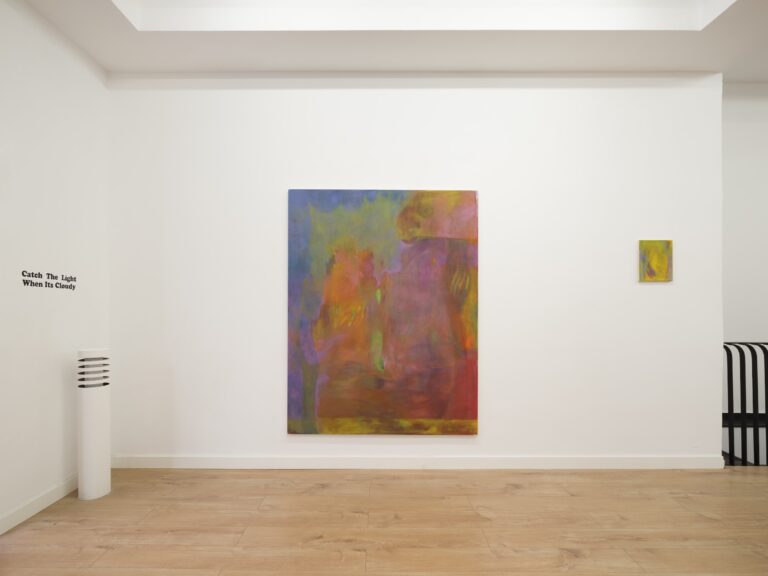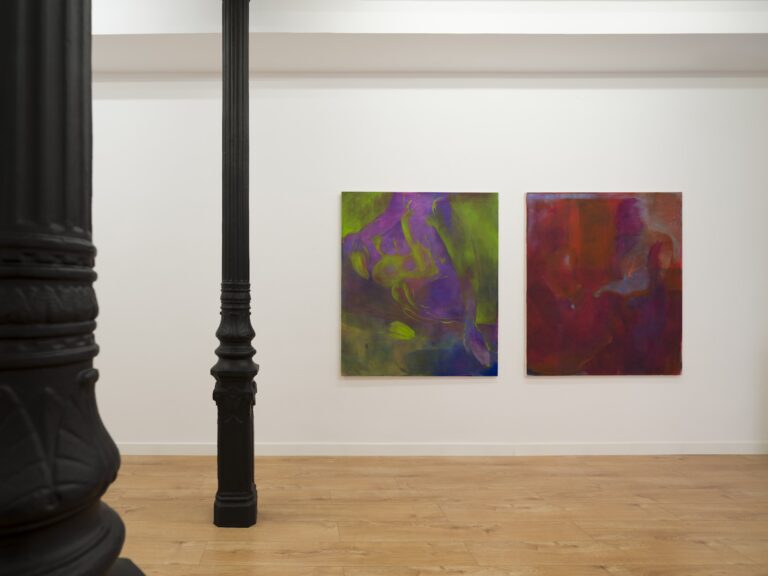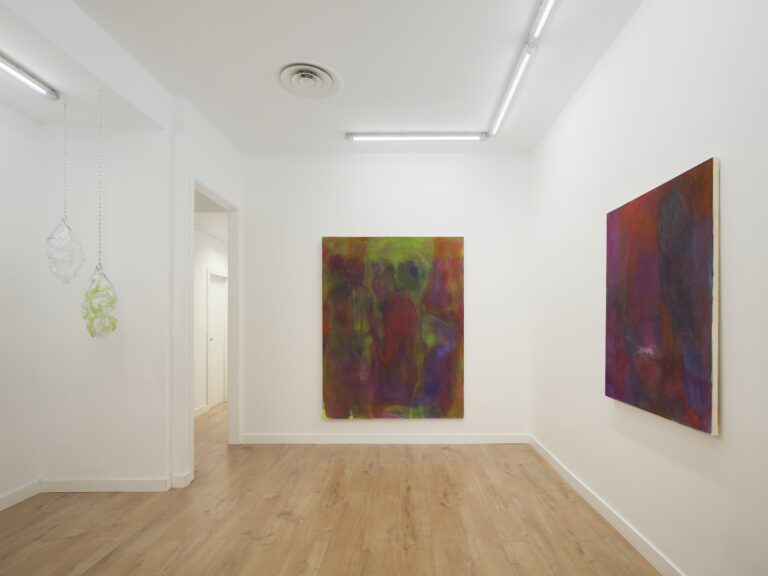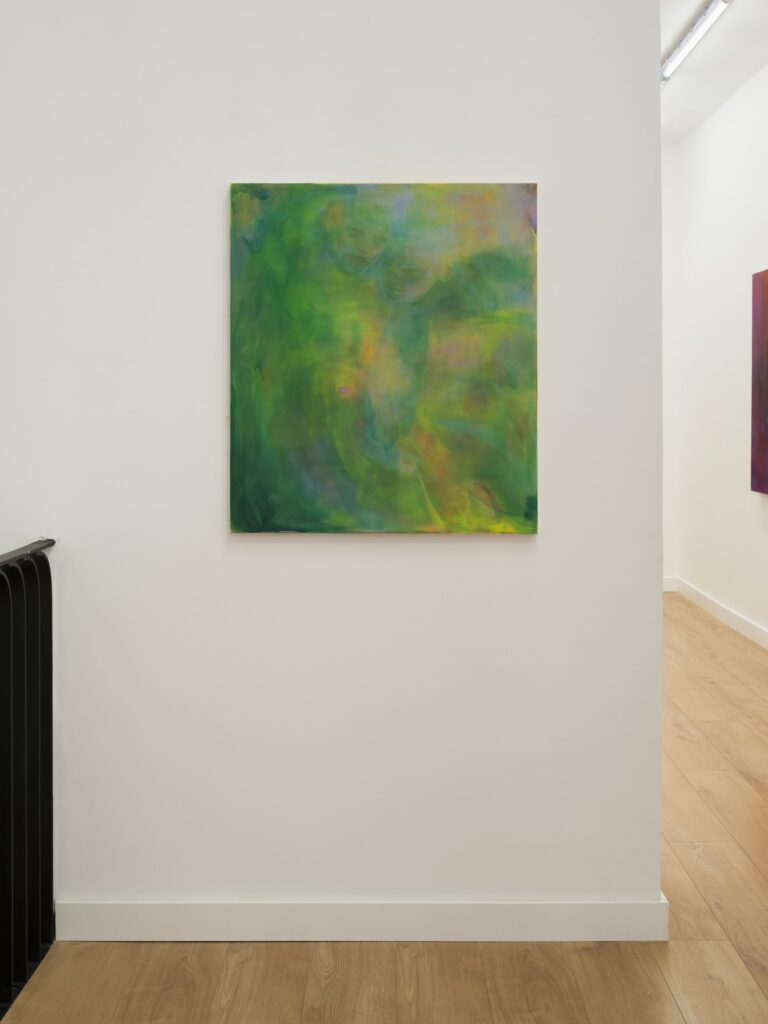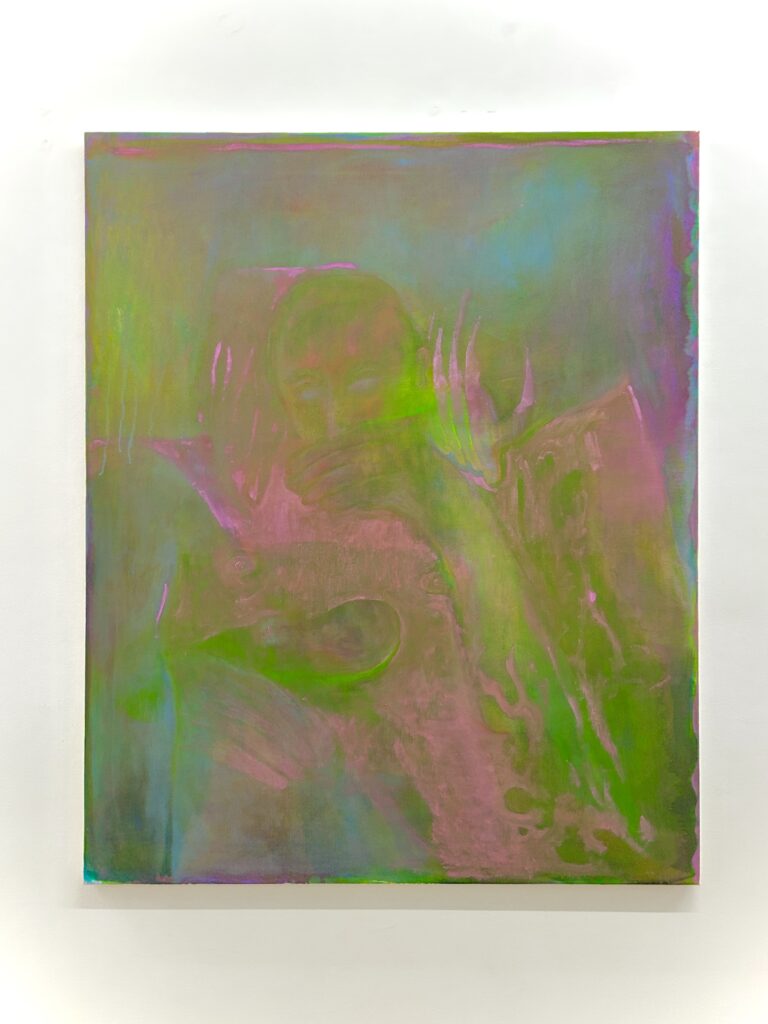Catch The Light When It’s Cloudy at Badr El Jundi Gallery in Madrid, Spain. 24/11/23-13/01/24
Curated by Maria Gracia de Pedro
Since Marilyn Sonneveld told me about a recurring nightmare of hers, involving a hypnotic colourful circle and a painfully piercing needle, I can’t stop thinking about Junji Ito’s horror manga Uzumaki. The Japanese 90s series tells the story of a fictional city plagued by a supernatural curse concerning spirals. In Kurouzu-cho everyone is obsessed with this symbol, whose contagious nature soon renders the psychological paranoia of one of the main characters into a collective transformation, and reality itself becomes a vortex. From nature and objects Junji Ito’s spirals start propagating on hairs, cheeks, eyes and, in the end, the totality of bodies whorl: twisting and intertwining together, to then disperse into the abstract form and the cosmos.
A similar dissolution effect has characterised Marilyn Sonneveld’s recent paintings, in which previous figurative body compositions — already orgiastic — have left space to less representational atmospheres. Colour, personal and emotive, sprawls into ghostly layers that render the canvas territories of encounters. From these, at times, figuration emerges. The new paintings lack a sense of centrality and instead propose inner landscapes, entrancing like the flames of a fire. The body — previously represented in agglomerated groups — is here seemingly fragmented and distinguishable in body parts, which become fleeting apparitions. Hands prevail, caresses on an autumnal Sunday, and a sense of softness pervades the show.
There is one painting with a more defined figure: it’s a baby whose unsteady contour is held in a hug by an adult, just as spectral. The background lives on their skin, surpassing the trembling edges of figuration, and selfhood is lost into sensorial grounds. It’s certainly not a coincidence that Sonneveld has recently become a mother, but the loss of defined individual boundaries it’s something that now belongs to the increasing collective awareness on the permeability of things.
Compartmentalisation into categories does not hold anymore, thus rendering subjectivity a dynamic and evolving concept, registered as such in the artist’s practice.
The inclusion of glass sculptures and paintings feels essential in such a context. Transparency absorbs one medium into the other allowing for fragile coexistence, but glass is a sharp material: it carries tension. Under such (darker) light one could interpret these works as monstrous foetuses whose unformed shape and murky colour combinations manifest the anxieties rising from notions of loss, of oneself in this instance. After all, the bright purple and acid green tones which characterise some of the canvases belong to the realm of nightmares. The fog pervading the works is an eerie presence. Sonneveld’s works could be thought of as alive, with an agency of their own.
In the essay “The Value of Liveliness: Painting as an Index of Agency in the New Economy”, Isabelle Graw does indeed register the vitality that a painting can possess, going beyond representation. Her argument is that the work may be influenced by a network of ideas, references, and cultural contexts, rather than solely by the artist’s own intentions. In Graw’s words “the ghostlike presence of the absent author” reflects the evolving nature of art in the post-medium condition, where traditional boundaries and roles in art-making have become more fluid, and the focus shifts from the artist as an individual creator to the complex web of influences, references, and contexts that contribute to the meaning of a painting. Such a notion could be extended to a post-individual condition, in which Sonneveld situates her practice.
There is a detail of one of the canvases that I like particularly: among fields of orange, lilac and pink, a series of brush strokes gives origin to slender fingers. They are velvet flames retiring sinuously like a pianist after a successful concert: exposed, exhausted. When the subject is lost, what happens to figuration?
Text by Caterina Avataneo.
